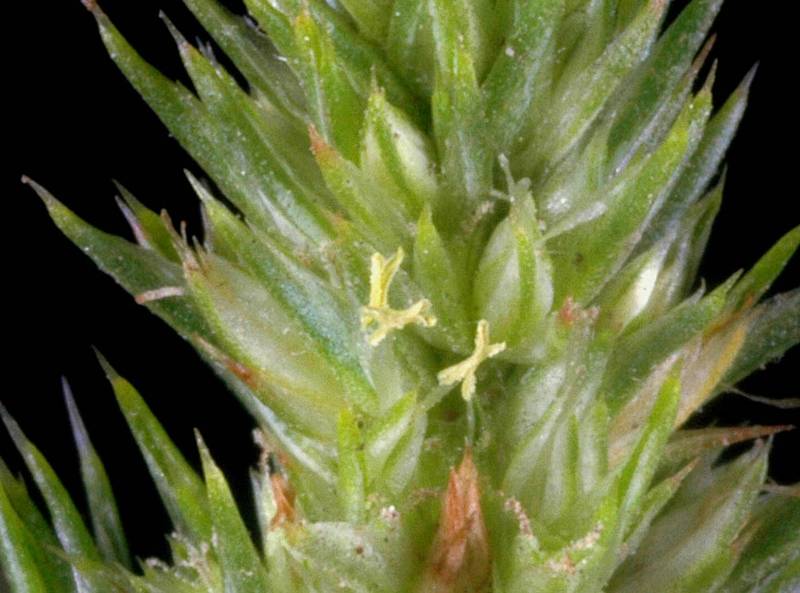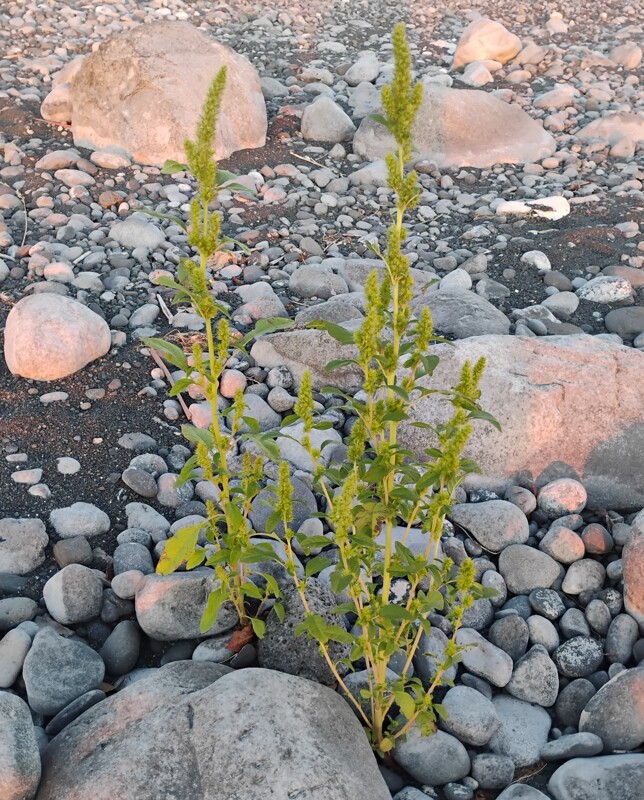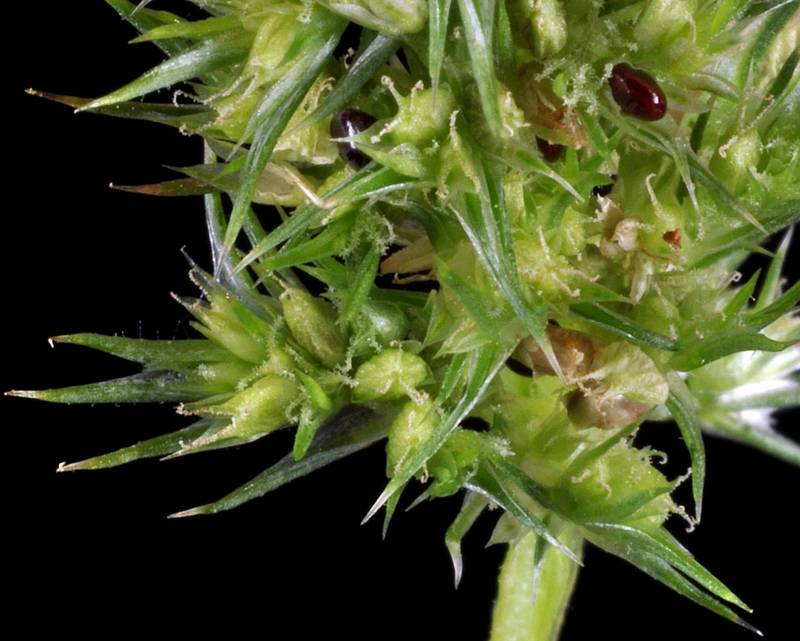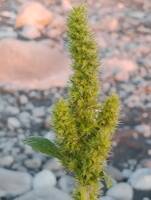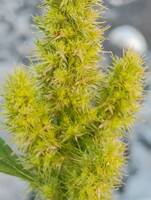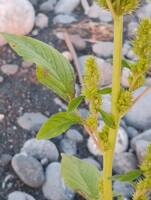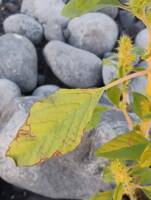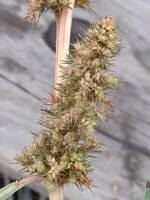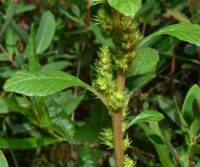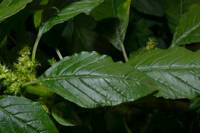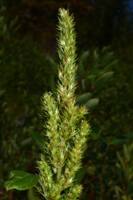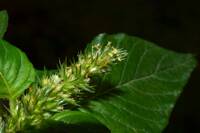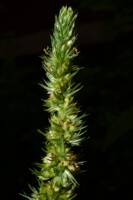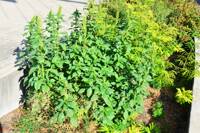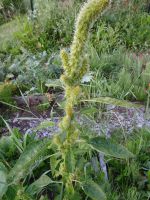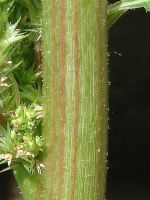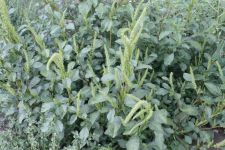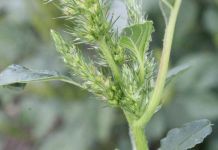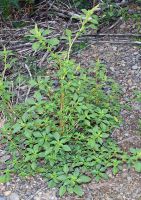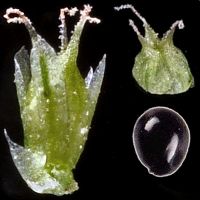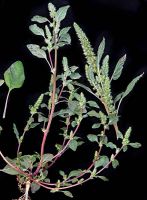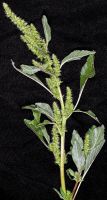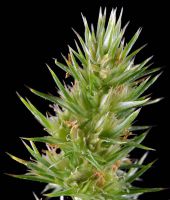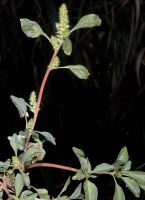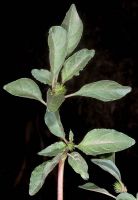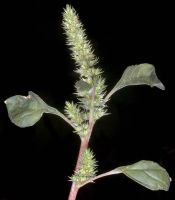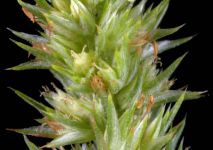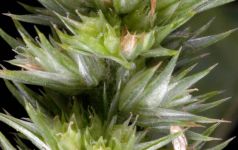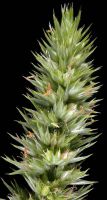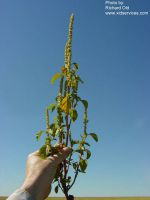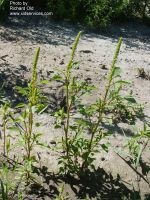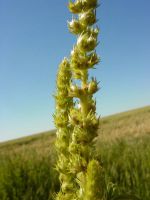Distribution: Occurring on both sides of the Cascades crest in Washington; British Columbia to California, east across North America to the Atlantic Coast.
Habitat: Fields, roadsides, wastelots, and other disturbed areas.
Flowers: July-October
Origin: Introduced from the southwestern United States and Mexico
Growth Duration: Annual
Conservation Status: Not of concern
Pollination: Wind
Monoecious, erect, simple to freely-branched annual, the 1-several stems up to 2 m. tall, striate and reddish, usually glabrous below the inflorescence.
Leaves alternate, the blade lanceolate or ovate to deltoid-elliptic, 2-10 cm. long, usually glabrous, narrowed abruptly to petioles about as long.
Flowers numerous in crowded, spike-like, terminal or axillary clusters that are usually compound and up to 15 cm. long, subtended by several linear-lanceolate, spine-tipped bracts 2.5-5 mm. long; sepals somewhat unequal, those of the pistillate flowers about equal to the fruit, 2-3 mm. long, narrowly oblong, acute to obtuse; petals none; stamens usually 3; styles 3.
1-seeded capsule.
Publication: Proc. Amer. Acad. Arts. 10: 347. (as Amarantus). 1875.
Amaranthus powellii S. Watson ssp. bouchonii (Thell.) Costea & Carretero [KZ99]
Amaranthus powellii S. Watson ssp. powellii [KZ99]
Atriplex retroflexus L. var. powellii (S. Watson) B. Boivin
PNW Herbaria: Specimen records of Amaranthus powellii in the Consortium of Pacific Northwest Herbaria database
WA Flora Checklist: Amaranthus powellii checklist entry
OregonFlora: Amaranthus powellii information
E-Flora BC: Amaranthus powellii atlas page
CalPhotos: Amaranthus powellii photos

